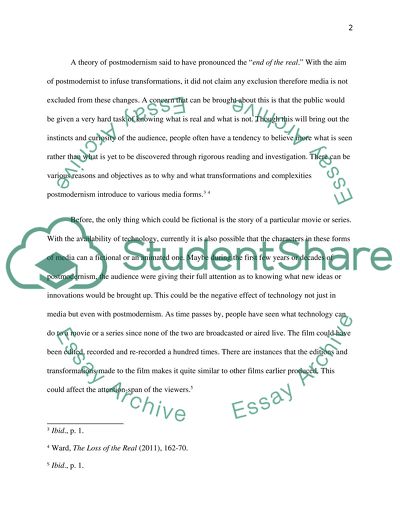Cite this document
(“Postmodernism and Media Research Paper Example | Topics and Well Written Essays - 1750 words”, n.d.)
Postmodernism and Media Research Paper Example | Topics and Well Written Essays - 1750 words. Retrieved from https://studentshare.org/visual-arts-film-studies/1451127-postmodernism-and-media
Postmodernism and Media Research Paper Example | Topics and Well Written Essays - 1750 words. Retrieved from https://studentshare.org/visual-arts-film-studies/1451127-postmodernism-and-media
(Postmodernism and Media Research Paper Example | Topics and Well Written Essays - 1750 Words)
Postmodernism and Media Research Paper Example | Topics and Well Written Essays - 1750 Words. https://studentshare.org/visual-arts-film-studies/1451127-postmodernism-and-media.
Postmodernism and Media Research Paper Example | Topics and Well Written Essays - 1750 Words. https://studentshare.org/visual-arts-film-studies/1451127-postmodernism-and-media.
“Postmodernism and Media Research Paper Example | Topics and Well Written Essays - 1750 Words”, n.d. https://studentshare.org/visual-arts-film-studies/1451127-postmodernism-and-media.


